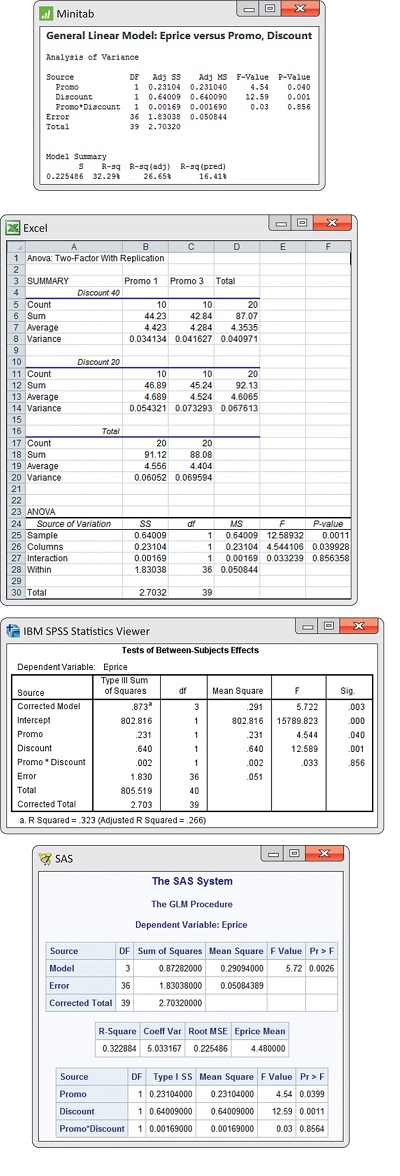

This leads to the mandatory deletion of one of the columns of the sub-matrix and possibly the transformation the other columns. Nevertheless, the breakdown poses a problem: if there are gg categories, the rank of this sub-matrix is not g but g−1.
#How to set up a two way anova in excel full
Typically, this is a full disjunctive table. Constraintsĭuring the calculations, each factor is broken down into a sub-matrix containing as many columns as there are categories in the factor. When the numbers of all categories for one of the combinations of factors are not equal, then the MANOVA is said to be unbalanced. We speak about balanced MANOVA when the numbers of categories are equal for all combinations of factors. The interactions to be used in the model can be easily defined in XLSTAT. However, the notation used to represent the interaction between factor A and factor B is A*B. To make a parallel with linear regression, the interactions are equivalent to the products between the continuous explanatory values, although here obtaining interactions requires nothing more than simple multiplication between two variables. If there is an interaction between the two factors, we will observe a significantly larger effect on the plants when the light is strong and the treatment is of type 2, while the effect is average for weak light, treatment 2 and strong light, treatment 1 combinations. For example, if we carry out treatment on a plant, and tests are carried out under two different light intensities, we will be able to include in the model an interaction factor treatment*light which will be used to identify a possible interaction between the two factors. InteractionsĪn “interaction” is an artificial factor (not measured) that reflects the interaction between at least two measured factors. And a potential correlation between response variables is more likely to be detected when these variables are studied together, as is the case with a MANOVA. Instead, the MANOVA is sensitive to both the difference of averages between levels of factors and the covariation between explanatory variables. The potential covariation between response variables is not taken into account with several ANOVAs. MANOVA also enables the simultaneous tests of all hypotheses tested by an ANOVA and is more likely to detect differences between levels of factors.įurthermore, the computation of several ANOVAs instead of one MANOVA increases the Type I error, which is the probability that the null hypothesis will be wrongly rejected. The MANOVA tests the presence of significant differences among combinations of levels of factors on several response variables. The advantage of the MANOVA as opposed to several simultaneous ANOVAs lies in the fact that it takes into account correlations between response variables, which results in a richer use of the information contained in the data. Effects of factors are estimated on a combination of several response variables. With the MANOVA, explanatory variables are often called factors. The main difference comes from the nature of the dependent variables: instead of a single one, we can study many of them. The MANOVA uses the same conceptual framework as the ANOVA. The observed difference between the sample means (33 - 24.8) is not convincing enough to say that the average number of study hours between female and male students differ significantly.Description of the MANOVA in XLSTAT General description Therefore, we do not reject the null hypothesis. lf t Stat t Critical two-tail, we reject the null hypothesis. Click in the Output Range box and select cell E1.Ĭonclusion: We do a two-tail test (inequality). Click in the Hypothesized Mean Difference box and type 0 (H 0: μ 1 - μ 2 = 0).ħ.

Click in the Variable 2 Range box and select the range B2:B6.Ħ. Click in the Variable 1 Range box and select the range A2:A7.ĥ.

Select t-Test: Two-Sample Assuming Unequal Variances and click OK.Ĥ. Note: can't find the Data Analysis button? Click here to load the Analysis ToolPak add-in.ģ.

On the Data tab, in the Analysis group, click Data Analysis. First, perform an F-Test to determine if the variances of the two populations are equal. To perform a t-Test, execute the following steps.ġ.


 0 kommentar(er)
0 kommentar(er)
